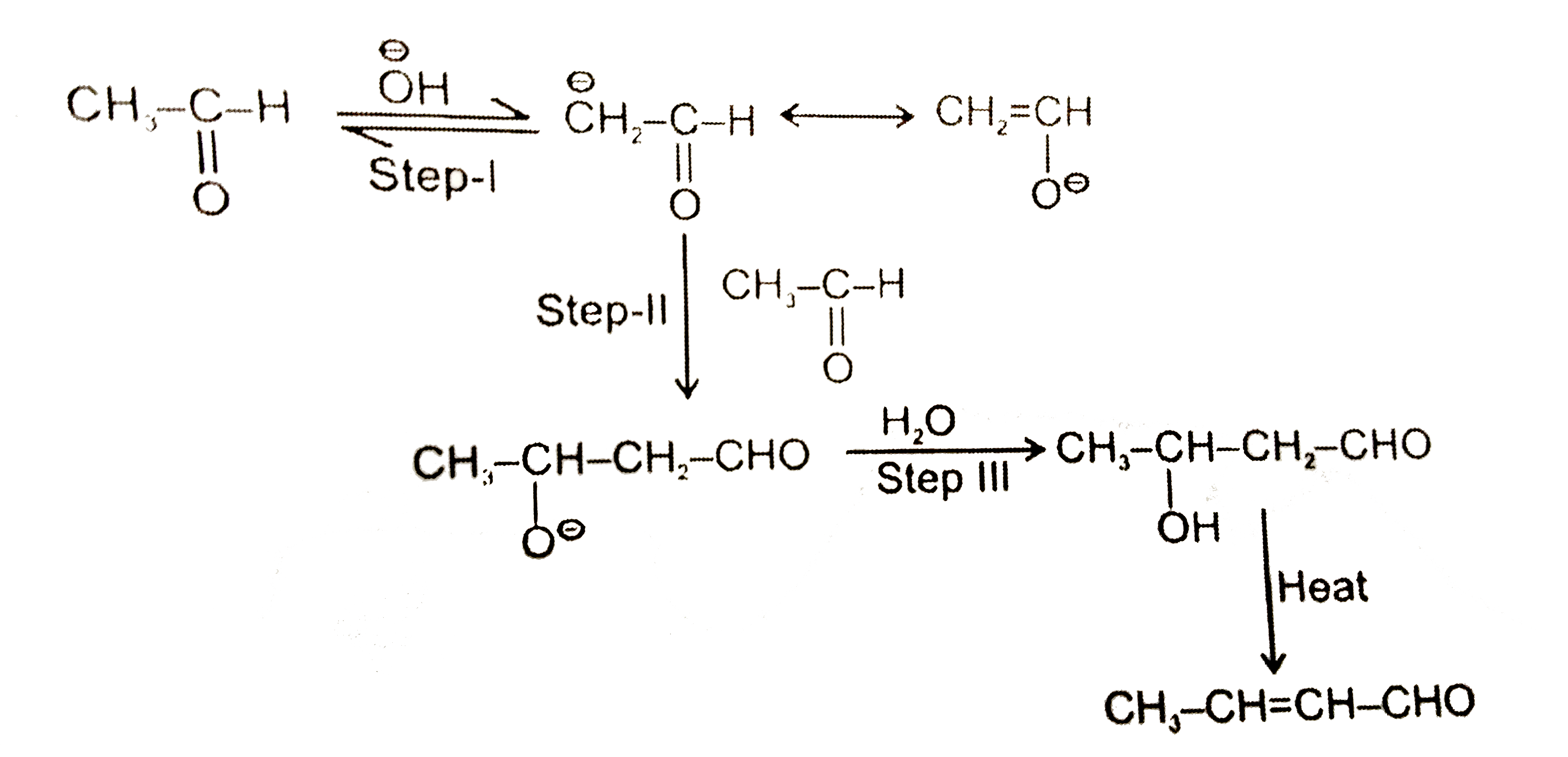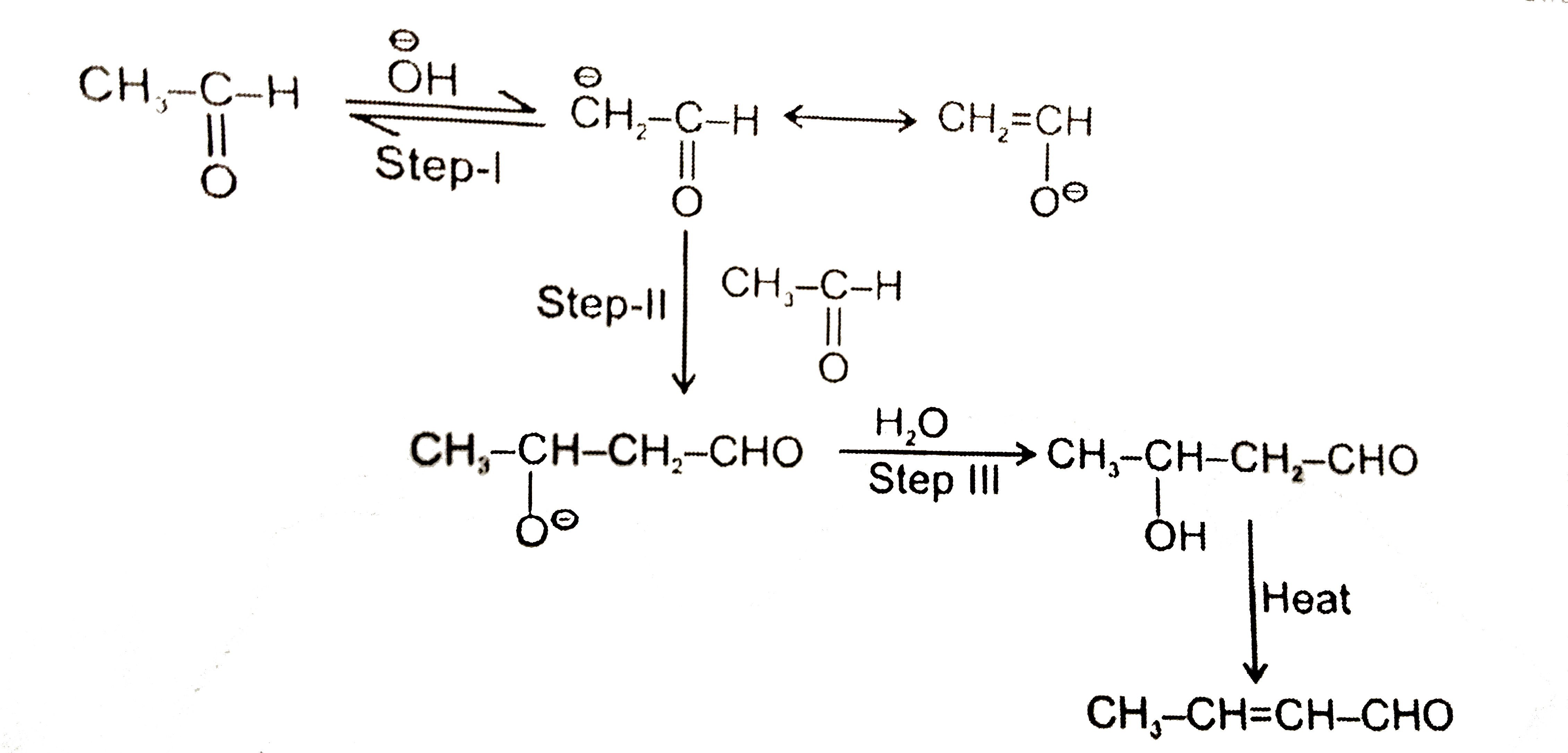The reaction between carbonyl compound and α-bromoesters in the presence of metal Zn to give β-hydroxy ester is known as:
Clemmensen reduction
Reformatsky reaction
Wolff-Kishner reaction
Grignard reaction
The correct Answer is:B
To solve the question regarding the reaction between carbonyl compounds and alpha-bromoesters in the presence of zinc, leading to the formation of beta-hydroxy esters, we can follow these steps:
1. Identify the Reactants:
- The reactants in the reaction are a carbonyl compound (which can be an aldehyde or a ketone) and an alpha-bromoester.
2. Understand the Role of Zinc:
- Zinc acts as a reducing agent in this reaction. It interacts with the halide (bromine in this case) of the alpha-bromoester, facilitating the formation of a carbanion.
3. Formation of Carbanion:
- The zinc reacts with the alpha-bromoester, leading to the formation of a carbanion. This carbanion is nucleophilic and can attack the electrophilic carbonyl carbon of the carbonyl compound.
4. Nucleophilic Attack:
- The carbanion generated from the alpha-bromoester attacks the carbonyl carbon, resulting in the formation of a beta-hydroxy ester. This step involves the breaking of the carbonyl double bond and the formation of a new bond between the carbanion and the carbonyl carbon.
5. Protonation:
- After the nucleophilic attack, the intermediate formed can be protonated (typically by adding an acid) to yield the final product, which is a beta-hydroxy ester.
6. Identify the Reaction Type:
- The overall reaction can be classified as a nucleophilic substitution reaction, specifically a reaction known as the "Deformity reaction" or "Deformity reaction" (often referred to as the "De Forn-Midsy reaction"). This reaction is characterized by the formation of beta-hydroxy esters from carbonyl compounds and alpha-bromoesters in the presence of zinc.
Final Answer:
The reaction between carbonyl compounds and alpha-bromoesters in the presence of zinc to give beta-hydroxy esters is known as the De Forn-Midsy reaction.
- The reactants in the reaction are a carbonyl compound (which can be an aldehyde or a ketone) and an alpha-bromoester.
- Zinc acts as a reducing agent in this reaction. It interacts with the halide (bromine in this case) of the alpha-bromoester, facilitating the formation of a carbanion.
- The zinc reacts with the alpha-bromoester, leading to the formation of a carbanion. This carbanion is nucleophilic and can attack the electrophilic carbonyl carbon of the carbonyl compound.
- The carbanion generated from the alpha-bromoester attacks the carbonyl carbon, resulting in the formation of a beta-hydroxy ester. This step involves the breaking of the carbonyl double bond and the formation of a new bond between the carbanion and the carbonyl carbon.
- After the nucleophilic attack, the intermediate formed can be protonated (typically by adding an acid) to yield the final product, which is a beta-hydroxy ester.
- The overall reaction can be classified as a nucleophilic substitution reaction, specifically a reaction known as the "Deformity reaction" or "Deformity reaction" (often referred to as the "De Forn-Midsy reaction"). This reaction is characterized by the formation of beta-hydroxy esters from carbonyl compounds and alpha-bromoesters in the presence of zinc.
The reaction between carbonyl compounds and alpha-bromoesters in the presence of zinc to give beta-hydroxy esters is known as the De Forn-Midsy reaction.
Topper's Solved these Questions
- BOOK - CENGAGE CHEMISTRY ENGLISHCHAPTER - ALIPHATIC AND AROMATIC ALDEHYDES AND KETONESEXERCISE - Exercises Assertion-Reasoning6videos
ALIPHATIC AND AROMATIC ALDEHYDES AND KETONES
- BOOK - CENGAGE CHEMISTRY ENGLISHCHAPTER - ALIPHATIC AND AROMATIC ALDEHYDES AND KETONESEXERCISE - Archives Objective10videos
ALIPHATIC AND AROMATIC ALDEHYDES AND KETONES
- BOOK - CENGAGE CHEMISTRY ENGLISHCHAPTER - ALIPHATIC AND AROMATIC ALDEHYDES AND KETONESEXERCISE - Exercises Multiple Correct33videos
ALIPHATIC AND AROMATIC ALDEHYDES AND KETONES
- BOOK - CENGAGE CHEMISTRY ENGLISHCHAPTER - ALCOHOL,PHENOL AND ETHERSEXERCISE - Archives Analytical And Descriptive15videos
ALCOHOL,PHENOL AND ETHERS
- BOOK - CENGAGE CHEMISTRY ENGLISHCHAPTER - APPENDIX INORGANIC VOLUME 2EXERCISE - Short Answer Type179videos
APPENDIX INORGANIC VOLUME 2
Similar Questions
Reaction between benzaldehyde and acetophenone in presence of dilute NaOH is known as:
View SolutionWhich of the following carbonyl compounds will give recemisation reaction in the presence of acid or base ?
View SolutionGive the mechanism of cyanohydrin formation when carbonyl compounds react with HCN in the presence of alkali.
View SolutionIn the presence of a small amount of phosphorous, aliphatic carboxylic acids react with chlorine or bromine to yield a compound in which α- hydrogen has been replaced by halogen. This reaction is known as :
View SolutionCarbonyl compound which contains α−H gives aldol condenation reaction in presence of alkaline medium. The reaction between two molecules of acetaldehyde take placeas follows in presence of base

Aldol condensation reaction is given byView SolutionCarbonyl compound which contains α−H gives aldol condenation reaction in presence of alkaline medium. The reaction between two molecules of acetaldehyde take placeas follows in presence of base

Intramolecular aldol condensation reaction is given byView SolutionOf the followig carbonyl compounds,how many would give aldol condensation reaction?
 View Solution
View SolutionTwo mole of an ester (A) are condensed in presence of sodium ethoxide to give a β−keto ester (B) and ethanol. On heating in an acidic solution (B) gives ethanol and β−keto acid (C). On decarboxylation (C) give 3-pentanone.
Identify (A),(B) and (C).View SolutionCoupling reaction between RMgX and R'X takes place to give R−R' in the presence of which of the following reagents ?
View SolutionWhich carbonyl compound will not give addition reaction with water ?
View Solution
